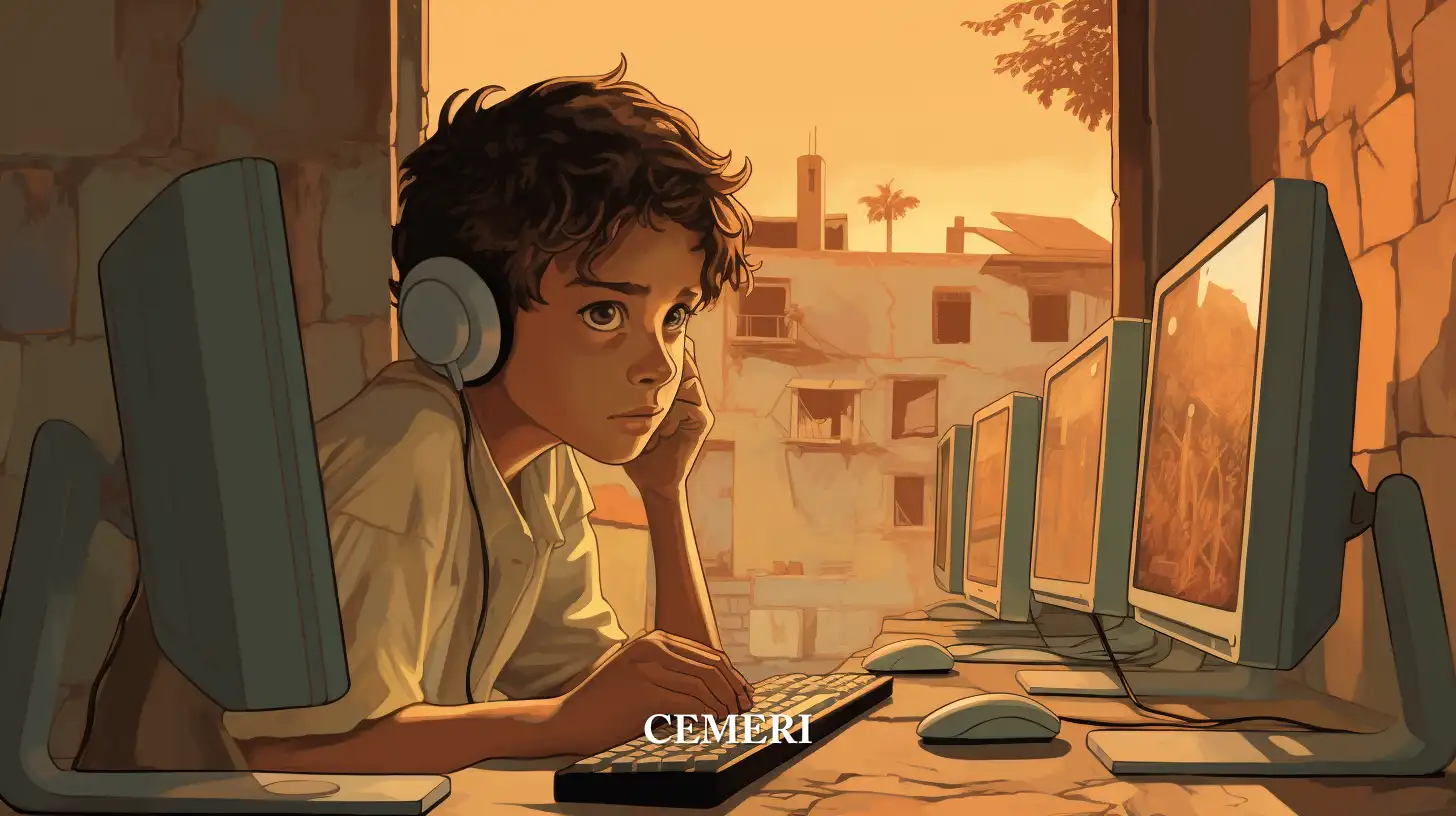Encyclopedia
Aída Jiménez
What is the digital gap?
- It is considered that there are three digital divides, which have evolved as new technologies have been incorporated into society itself.

The new information and communication technologies are a tool that allow us to access any type of information and knowledge, we are in an era in which we can connect with anyone around the world, and solve our doubts with a single click. This digital age has brought with it countless advantages that have facilitated our daily lives, however, not everything is hunky-dory, since, unfortunately, it has also brought with it negative consequences.
This new digital opening was expected to benefit everyone equally, and shorten the social differences that already existed, but sadly it has increased them; it is from these new differences and disadvantages that the term Digital Divide is born. It is worth mentioning that this term is not new, and has its origin in the nineties, after the impact that ICT began to have.
According to the Office for Economic Cooperation and Development (OECD), the digital divide refers to "the gap or division between individuals, households, economic and geographic areas with different socioeconomic levels in relation to both their opportunities to access information technologies and the communication, such as using the Internet for a wide variety of activities"
It is considered that there are three digital gaps, which have evolved as new technologies have been incorporated into society itself; The first digital divide is the one that distinguishes between people connected to technological devices and those who are not. Despite the fact that access to ICTs has been facilitated in recent years, this inequality is still present; the The socioeconomic situation of people plays a determining role in the accessibility of new technologies, that is, the lower the economic status, the more complicated the access to them is, either due to the lack of necessary technological devices or the type of Internet connection available, or where appropriate, the lack thereof.
"The digital divide not only refers to access to the Internet, but also to the availability of ICT-related tools, hardware, and the use made of them through software."
Martin Romero, A. 2020.
It is important to mention the importance of technological hardware or devices within the digital divide, since it is useless to have a technological device that is considered obsolete thanks to new updates.
The second digital divide is the one that distinguishes the difficulties that people face when using new technologies once they have gained access to them; age, for example, is one of the representative factors of this second gap; This is due to the generational divide: those who grew up without technology or with very few tools, those who were growing at the same time that technologies were developed, and who were born and are growing up in a totally digital world.
Those who are not used to using these will have greater difficulty when interacting with them, which can affect them academically, professionally, and personally; Over the years, these technologies will become increasingly important in our daily life.
The third digital divide is one that focuses on the unequal opportunities that people have to take advantage of new technologies. It is important not to be confused with the second gap, where the problems are based on the difficulty of learning to use the technologies, while, in the third gap, the problem arises from the particular barriers that prevent the full use of said technologies. .
Some examples of these barriers of the third gap can be: the level of training of citizens, the higher our educational level, the easier it will be for us to use these technologies, in addition to having the ability to select reliable information that provide better utilities from it; Geographic location is an important variable in access to these technologies, since the differences in development and infrastructure between geographical spaces can make a big difference, since it is not as simple to connect to the Internet in a rural area, as it would be in an urban area.
Some examples of these barriers of the third gap can be: the level of training of citizens, the higher our educational level, the easier it will be for us to use these technologies, in addition to having the ability to select reliable information that provide better utilities from it; Geographic location is an important variable in access to these technologies, since the differences in development and infrastructure between geographical spaces can make a big difference, since it is not as simple to connect to the Internet in a rural area, as it would be in an urban area.
An example of how the digital divide affects daily life is the case of the COVID-19 pandemic; Given the circumstances around the world, almost all activities that were not essential had to be stopped, in order to prevent the spread of the virus, which forced most of us to continue with our daily activities remotely, call it teleworking, education online, communication and leisure activities, etc. Such digital dependency has been violating marginalized groups, but during the pandemic, this has gotten even worse.
It is in this context that most schools were forced to close their facilities and find a way to continue classes despite not being able to meet in person; This is where new technologies played an important role, since with the help of existing digital resources classes were able to continue virtually. However, this type of classes affected many children who were in a disadvantaged socioeconomic situation, mainly in developing countries and in rural areas, where these children did not have an internet connection, a computer or a smartphone with which to connect to their classes.
As specified by Kuric Kardelis et al:
In other words, online education aggravates social inequalities. To the problems of ICT accessibility and connectivity we must add the lack of digital skills, the general cultural capital of the family environment and the existence of specific problems of coexistence, vulnerability and poverty that affect the follow-up of the academic year.
Sources
Domínguez Alegría, G. (2018, diciembre). Brechas. Impacto de las brechas digitales en la población extranjera. Accem. http://hdl.handle.net/11162/193083
Kuric Kardelis, S., Calderón Gómez, D., & Sannmartín Ortí, A. (2021). Educación y brecha digital en tiempos del COVID-19. Perfiles y problemáticas experimentadas por el alumnado juvenil para continuar sus estudios durante el confinamiento. Revista de Sociología de la Educación-RASE, 14(1), 63. https://doi.org/10.7203/rase.14.1.18265
Maya Álvarez, P. (2008). La brecha digital, brecha social. Los recursos humanos en el desarrollo y la capacitación a través del aprendizaje digital. Gazeta de Antropología, 24/2. http://www.gazeta-antropologia.es/?p=2274
Martín Romero, A. (2020). La brecha digital generacional. Temas Laborales: Revista andaluza de trabajo y bienestar social, 151, 77–93. https://dialnet.unirioja.es/servlet/articulo?codigo=7464144
OCDE. (2001). Understanding the digital divide. Paris. https://www.oecd- ilibrary.org/scien-ce-and-technology/understanding-the-digital- divide_236405667766

